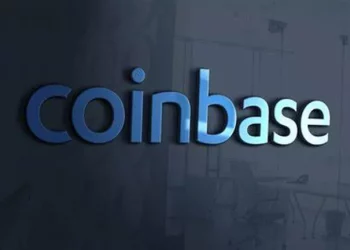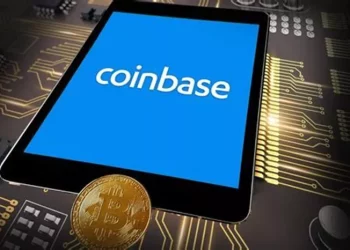Cryptocurrency transactions are made possible through a decentralized system of miners, who validate and record transactions on the blockchain. In order to incentivize miners for their work, users must pay miner fees. These fees are essential to the functionality of the blockchain, as they ensure that miners are rewarded for their efforts and that transactions are processed in a timely manner.
In the context of Coinbase Wallet, miner fees play an important role in the process of sending and receiving cryptocurrencies. Understanding how miner fees work in Coinbase Wallet is crucial for ensuring that your transactions are processed smoothly and efficiently.
This article will explore what miner fees are, why they exist, how they work in Coinbase Wallet, and how you can manage them to optimize your cryptocurrency transactions.
What are Miner Fees?
Miner fees, also known as transaction fees or network fees, are payments made by cryptocurrency users to miners (or validators) who validate transactions on the blockchain. These fees are required to process and confirm transactions, ensuring that they are added to the blockchain ledger. In essence, miner fees act as an incentive for miners to include transactions in the blocks they add to the blockchain.
Each time you send cryptocurrency to another user, a miner fee is charged to ensure that the transaction is processed. These fees are typically paid by the sender of the transaction and are calculated based on various factors, including the transaction size, the level of network congestion, and the blockchain used.
Miner fees are paid to miners, not to the cryptocurrency exchanges or wallets, and they vary depending on the blockchain. For example, the fees for sending Bitcoin (BTC) will be different from the fees for sending Ethereum (ETH) or any other cryptocurrency.
Why Do Miner Fees Exist?
Miner fees exist for several reasons, and they serve as an important part of how cryptocurrency networks function:
Incentive for Miners: Mining is a resource-intensive activity. Miners use computational power and electricity to process transactions and secure the network. Miner fees provide miners with a reward for their work. Without these fees, there would be no incentive for miners to validate transactions and keep the network running.
Network Security: Miner fees also contribute to the overall security of the network. By requiring users to pay a fee for every transaction, blockchain networks can prevent spam transactions, as malicious actors would need to pay for every fraudulent transaction they attempt to send.
Transaction Prioritization: The fee structure helps prioritize transactions on the network. When there is high demand for block space (e.g., during periods of network congestion), users can offer higher miner fees to incentivize miners to prioritize their transactions. In this way, users who pay higher fees can ensure that their transactions are processed more quickly.
Decentralization: Unlike centralized payment systems where intermediaries control transaction fees, cryptocurrencies like Bitcoin and Ethereum are decentralized. Miner fees are an integral part of maintaining the decentralized nature of the network by allowing miners to compete for block space and resources.
How Do Miner Fees Work in Coinbase Wallet?
Coinbase Wallet is a non-custodial wallet that allows users to store, send, and receive cryptocurrencies directly from their own devices. While Coinbase Wallet does not charge transaction fees (except for network fees), users are still required to pay miner fees when making transactions.
When you send cryptocurrency using Coinbase Wallet, you will notice that a miner fee is included in the transaction. This fee is automatically calculated based on the blockchain you are using, the transaction size, and the level of network congestion at the time of the transaction.
Key Factors that Affect Miner Fees in Coinbase Wallet:
Transaction Size: The size of the transaction (in bytes) can affect the miner fee. Larger transactions require more data to be processed, so they typically incur higher fees. For example, a simple transaction with one sender and one recipient will have a smaller size and therefore a lower fee, while a transaction involving multiple recipients or additional smart contract interactions will have a larger size and incur a higher fee.
Blockchain Used: Different blockchains have different fee structures. For example, Bitcoin’s blockchain typically has higher fees than Ethereum’s blockchain due to the block size and transaction volume. Coinbase Wallet supports a wide range of cryptocurrencies, and each cryptocurrency will have its own miner fee associated with it. When you send Bitcoin, you will pay a different fee than if you were sending Ethereum or another cryptocurrency.
Network Congestion: The state of the blockchain network also plays a key role in determining miner fees. If the network is congested and many users are trying to send transactions, miner fees will rise as users compete to get their transactions processed faster. During times of high demand, users can opt to pay a higher fee to have their transaction included in the next block.
Transaction Priority: When you send a transaction, Coinbase Wallet may give you the option to choose the priority of your transaction. A higher fee typically means faster processing, while a lower fee might result in slower confirmation times. If you want your transaction to be processed quickly, you can opt to pay a higher fee, whereas if you are willing to wait longer, you can choose a lower fee.
Currency Type and Method of Payment: Depending on the type of cryptocurrency and how you are funding the transaction, fees can vary. For instance, Ethereum and ERC-20 tokens often have higher fees because of gas costs (Ethereum’s transaction fees). On the other hand, Litecoin and Bitcoin transactions may incur different fees depending on the network’s conditions.
How Are Miner Fees Calculated in Coinbase Wallet?
Coinbase Wallet does not calculate miner fees directly but instead calculates them based on the current network conditions of the blockchain being used for the transaction. However, Coinbase Wallet provides users with an estimated miner fee before the transaction is completed. Here’s how it works:
Transaction Data: When you initiate a transaction in Coinbase Wallet, the wallet collects all the necessary transaction data, including the amount of cryptocurrency to be sent and the recipients’ addresses. This data is then formatted according to the specifications of the blockchain you are using.
Fee Estimation: Coinbase Wallet uses fee estimation algorithms to calculate the appropriate miner fee based on current network conditions. The wallet typically provides a recommended fee, which ensures that your transaction will be processed in a reasonable amount of time. However, users can also adjust the fee based on how quickly they want their transaction to be processed.
Transaction Confirmation: Once you have reviewed and confirmed the transaction details, including the miner fee, Coinbase Wallet sends the transaction to the network. The transaction is added to the blockchain once it is validated by miners.
Network Congestion: During times of high traffic on the blockchain, the estimated miner fees may increase as the network becomes congested. In such cases, Coinbase Wallet will suggest a higher fee for faster confirmation. If the network is less congested, the fees will typically be lower.
Managing Miner Fees in Coinbase Wallet
While miner fees are generally out of the user’s control, there are several ways to manage and minimize them when using Coinbase Wallet. Here are some strategies for managing miner fees:
1. Adjusting Transaction Fees Manually
Coinbase Wallet offers the option to adjust the miner fee before finalizing a transaction. If you are not in a hurry to have your transaction confirmed, you can select a lower fee. This will slow down the transaction confirmation process but may save you some funds in fees.
Low Priority: If you select a lower priority transaction, the miner fee will be reduced, and the transaction will take longer to confirm.
High Priority: If you select a higher priority, your transaction will be processed faster, but you will need to pay a higher miner fee.
2. Wait for Lower Network Congestion
When the network is congested, miner fees tend to rise. If your transaction is not urgent, you can wait for the network to become less congested. This will likely result in lower miner fees. Use services that track the current state of network congestion, such as Bitcoin’s mempool or Ethereum gas trackers, to time your transactions better.
3. Use Faster or More Cost-Effective Blockchains
If you’re looking to reduce fees, consider using a blockchain with lower fees. For example, Ethereum’s gas fees can be high due to network congestion, but alternatives like Binance Smart Chain or Polygon offer lower fees for transactions. Coinbase Wallet supports various blockchains, so you may want to explore alternatives depending on your needs.
4. Batch Transactions
If you need to send funds to multiple recipients, consider batching the transactions into one. This can often reduce the overall miner fee, as the fee is typically based on the transaction size in bytes. By sending multiple payments in a single transaction, you can save on transaction fees.
How to Estimate Miner Fees in Coinbase Wallet
Coinbase Wallet provides users with an estimate of the miner fee before completing the transaction. When sending funds, you will see the estimated miner fee based on the current state of the blockchain network. The fee estimation is made using the wallet’s algorithms, which factor in network congestion, transaction size, and blockchain-specific conditions.
Users can manually adjust the miner fee by selecting the desired priority level (low, medium, or high). If you select a low priority, the fee will be lower but the transaction may take longer to confirm. Conversely, a high-priority fee will result in a faster transaction but a higher fee.
Conclusion
Miner fees in Coinbase Wallet are an integral part of the cryptocurrency transaction process. These fees are used to incentivize miners and ensure that transactions are securely recorded on the blockchain. While Coinbase Wallet does not charge its own fees for sending or receiving cryptocurrencies, users must still pay miner fees, which vary depending on the blockchain used, network congestion, and transaction size.
Managing miner fees effectively requires understanding the factors that influence them, such as transaction size and network congestion, and making informed decisions about transaction priority. By adjusting the miner fee in Coinbase Wallet and taking advantage of tools to track network conditions, users can optimize their transactions and minimize fees.
Ultimately, while miner fees cannot be entirely avoided, understanding how they work and how to manage them can significantly improve the efficiency and cost-effectiveness of your cryptocurrency transactions on Coinbase Wallet.
Related topics:

















